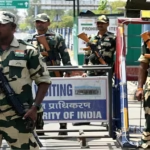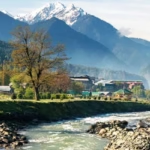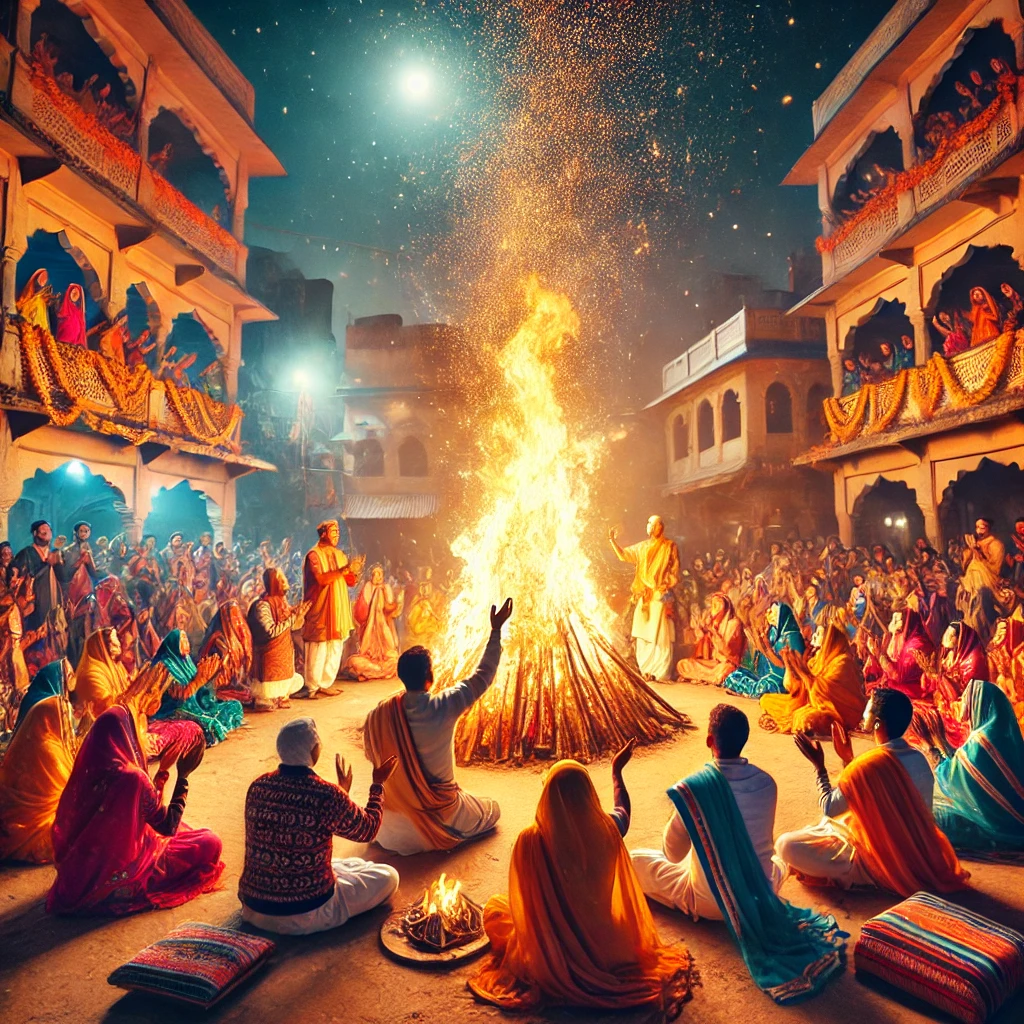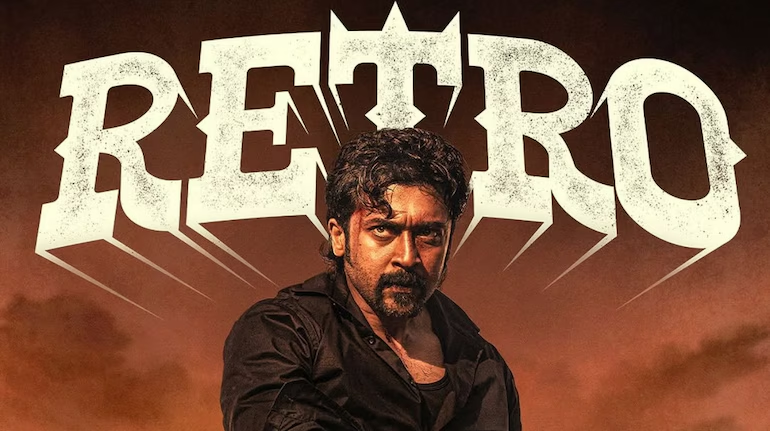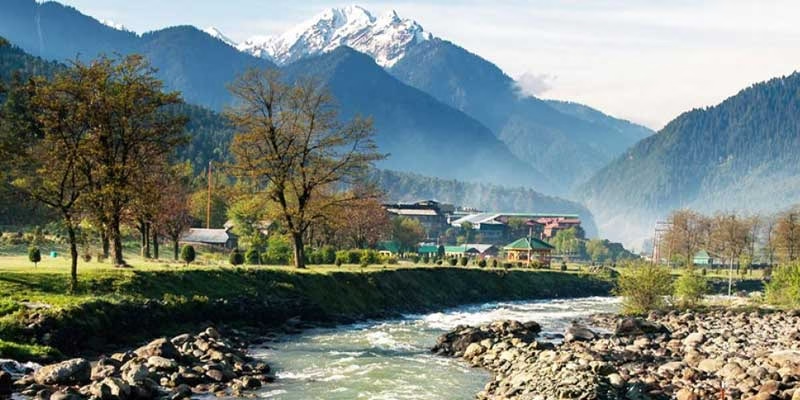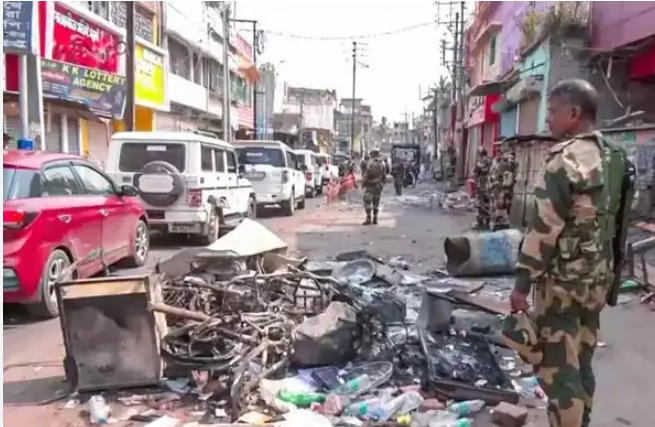Today, as the evening sun sets on March 13, 2025, millions across India and around the world prepare to celebrate Holika Dahan, marking the symbolic victory of good over evil. This traditional celebration, also known as Chhoti Holi, takes place on the eve of the more widely recognized festival of colors – Holi. As bonfires are lit in neighborhoods, courtyards, and communities, there’s a palpable sense of renewal and spiritual cleansing in the air. The flames that dance toward the night sky carry with them centuries of tradition, mythology, and cultural significance that continues to resonate with people of all ages.
The Mythological Foundation of Holika Dahan
The celebration of Holika Dahan is deeply rooted in Hindu mythology, specifically the legend of Prahlad and his evil aunt Holika. According to ancient texts, there once lived a powerful demon king named Hiranyakashipu who, blinded by his own power, demanded to be worshipped as a god. His young son Prahlad, however, remained a devoted follower of Lord Vishnu, much to his father’s displeasure. Enraged by his son’s unwavering devotion, Hiranyakashipu conspired with his sister Holika, who possessed a special power that made her immune to fire.
The plan was simple yet sinister – Holika would sit in a blazing fire with Prahlad on her lap, ensuring his demise while remaining protected herself. However, when the moment came, divine intervention prevailed. Prahlad’s deep devotion to Lord Vishnu protected him from the flames, while Holika, misusing her power for evil, was consumed by the fire. This pivotal story teaches us that righteous devotion ultimately triumphs over malevolence, and that powers misused for harm eventually lead to one’s own destruction.
This mythological narrative serves as a powerful reminder that truth and goodness will always prevail, no matter how formidable the forces of evil may seem. The fire that consumed Holika has transformed into a symbol of purification, renewal, and the eternal victory of dharma (righteousness) over adharma (unrighteousness).
Timings and Auspicious Moments for Holika Dahan 2025
For those observing the festival this year, the timing of the Holika Dahan ritual holds particular importance. According to Hindu astrological calculations, the Holika Dahan muhurat (auspicious time) for 2025 falls between 11:26 PM on March 13 and 12:31 AM on March 14. During this time, the planetary positions are considered most favorable for performing the ritual bonfire.
The Purnima Tithi (full moon day) begins at 10:35 AM on March 13 and ends at 12:23 AM on March 14. An important consideration for this year’s celebration is the presence of Bhadra Kaal – an inauspicious period during which no auspicious activities should be performed. The Bhadra timings for March 13 are split into two segments: Bhadra Punchha from 6:57 PM to 8:14 PM and Bhadra Mukha from 8:14 PM to 10:22 PM. Devotees are advised to avoid lighting the Holika bonfire during these hours and wait for the recommended muhurat after Bhadra Kaal has passed5.
Hindu scriptures emphasize that the ritual of Holika Dahan should be performed during Pradosh Kaal – the evening period after sunset – when the Purnima Tithi is in effect, but after the influence of Bhadra has subsided5. This careful attention to timing reflects the deep connection between cosmic rhythms and earthly celebrations in Hindu traditions.
The Spiritual Significance of Holika Dahan
Beyond its historical and mythological origins, Holika Dahan carries profound spiritual significance for believers. The sacred fire lit during this festival symbolizes several important aspects of spiritual growth and well-being. First and foremost, it represents the purification process – just as fire refines gold by burning away impurities, the Holika bonfire is believed to cleanse the participants of negative energies, past transgressions, and spiritual pollutants.
The essence of Chhoti Holi lies in celebrating the triumph of good over evil. The legend of Prahlad and Holika reinforces the belief that truth and righteousness will always prevail, no matter how formidable the forces of evil may seem. This enduring message continues to inspire generations of devotees who participate in the festival.
In many rural communities across India, Holika Dahan also marks an important agricultural transition – the end of winter and the beginning of the harvest season. The bonfire becomes a symbol of gratitude for the abundance received and an invocation for continued prosperity in the coming seasons. This agricultural connection reminds us that many religious festivals are intricately woven into the fabric of seasonal changes and agricultural cycles that have shaped human civilization for millennia.
Perhaps most importantly, Holika Dahan offers a chance for renewal and fresh beginnings. The fire symbolically burns away the old, the stagnant, and the negative, making way for new growth, positive energy, and auspicious beginnings. In a world often marked by stress and negativity, this symbolic renewal offers spiritual practitioners a chance to reset their emotional and spiritual compasses.
Rituals and Celebrations: How Holika Dahan Is Observed
The celebration of Holika Dahan typically begins days before the actual festival. Community members, particularly children, gather fallen wood, twigs, dried leaves, and other combustible materials to construct the ceremonial bonfire11. In many regions, an effigy representing Holika is placed atop the pyre, sometimes with a figure of Prahlad in her lap, symbolically recreating the mythological scene4.
On the evening of Holika Dahan, as the appointed time approaches, families and communities gather around the pyre. The atmosphere is charged with devotion, anticipation, and festivity. Often, devotional songs and hymns (bhajans) are sung, creating a spiritually uplifting environment. Elders share the story of Prahlad and Holika with younger generations, ensuring the continuation of this oral tradition and its moral lessons6.
When the auspicious moment arrives, the bonfire is lit, typically by a community elder or religious leader. As the flames engulf the pyre, prayers are offered seeking divine protection, prosperity, and the destruction of negative forces6. Many devotees perform a ritual circumambulation (parikrama) around the bonfire, seeking blessings and purification. Offerings of sweets, fruits, and traditional items are made to the fire, and in some regions, recently harvested grains are roasted in the bonfire and later consumed as prasad (blessed food).
The glowing embers of the Holika fire hold special significance. In some traditions, people collect these ashes the following morning and apply them to their bodies as a symbol of purification. Some even carry them home to mark their doorways, believing they bring protection and good fortune4. The festivities continue into the next day with Rangwali Holi, when people play with colors, share sweets, and celebrate with unbridled joy.
Dos and Don’ts for a Safe and Meaningful Holika Dahan
While Holika Dahan is a time of jubilation and spiritual significance, it’s important to celebrate responsibly with attention to both safety and tradition. For those participating in the festival, there are several important practices to observe and pitfalls to avoid.
Among the important practices to follow, performing rituals with sincere devotion stands paramount. The spiritual essence of Holika Dahan lies in the mindfulness and reverence with which the ceremonies are conducted. Using eco-friendly materials for the bonfire is equally important – dry wood, cow dung cakes, and other natural materials are traditional and environmentally sound choices6.
Offering prayers and singing devotional songs around the bonfire enhances the spiritual atmosphere and connects participants to the deeper meaning of the festival. Traditional offerings of sweets, fruits, and ceremonial items to the fire are considered auspicious and form an integral part of the ritual6. Many families also take this opportunity to seek blessings from elders and practice charity by donating food, clothing, or essentials to those in need, embodying the spirit of kindness and community welfare that underlies many Hindu festivals.
Safety considerations are paramount during Holika Dahan. Maintaining a safe distance from the fire and adhering to basic fire safety guidelines prevents accidents and injuries. Participants should avoid using plastic, synthetic materials, or any toxic substances in the bonfire, as they release harmful chemicals when burned6. The celebration should remain peaceful and respectful, avoiding any form of aggression or excessive consumption of intoxicants, which can detract from the festival’s sacred nature.
Environmental consciousness should inform all aspects of the celebration. Bonfires should be of reasonable size to minimize air pollution, and care should be taken to avoid lighting them near flammable objects or in overcrowded areas. After the celebration, the area should be cleaned properly, with ash and remnants disposed of responsibly.
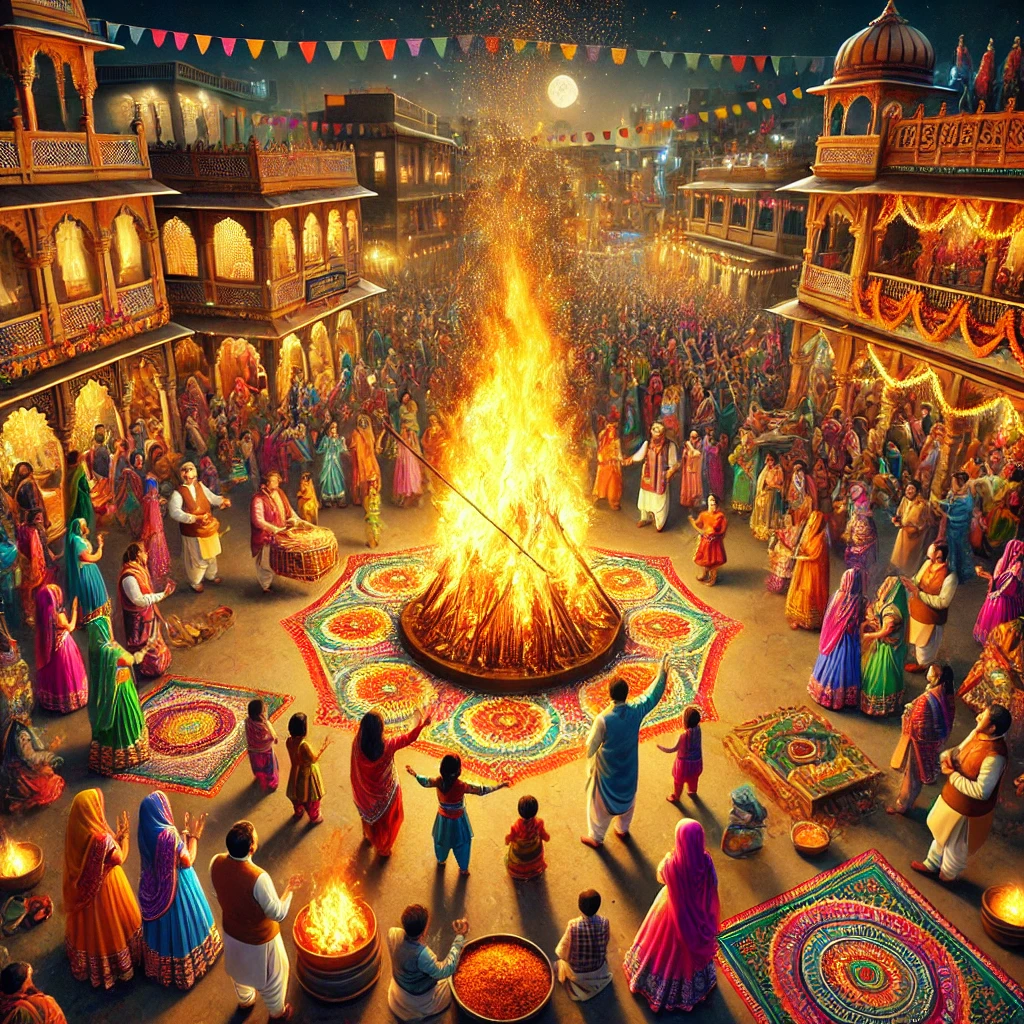
Heartfelt Wishes to Share on Holika Dahan
As communities come together to celebrate this auspicious occasion, sharing warm wishes and thoughtful messages with loved ones adds to the festive spirit. Traditional greetings emphasize themes of renewal, positivity, and the triumph of good over evil that are central to Holika Dahan.
A meaningful wish might express hope for the flames of Holika Dahan to burn away all negativity and bring happiness, prosperity, and success into the recipient’s life. Other sentiments often celebrate the victory of good over evil with colors of joy and love, or wish for the festival to fill one’s life with warmth, positivity, and new beginnings.
Many wishes reference the divine protection exemplified in Prahlad’s story, invoking similar blessings for loved ones: “On this auspicious occasion, may the divine blessings of Lord Vishnu protect you from all harm.” Other messages highlight the moral of the Holika narrative: “Holika Dahan is a reminder that no matter how strong evil may seem, goodness always prevails. Let’s welcome Holi with a heart full of love and happiness!”
The imagery of fire and purification features prominently in traditional wishes: “As the bonfire burns bright, may your troubles fade away like ashes, leaving behind light, hope, and joy,” or “May the sacred fire of Holika Dahan burn away all your worries and illuminate your life with happiness and prosperity.”These sentiments connect the physical ritual with its deeper spiritual significance.
In today’s digital age, these messages are shared not only in person but also through social media platforms, creating virtual communities of celebration that extend beyond geographical boundaries. Whether shared through WhatsApp, Facebook, Instagram captions, or traditional greeting cards, these wishes help preserve and propagate the cultural heritage and spiritual wisdom embedded in Holika Dahan.
Preparing for Rangwali Holi: The Celebration Continues
As the embers of Holika Dahan begin to cool, preparations for the next day’s Rangwali Holi begin in earnest. This transition from the solemn, reflective ritual of Holika Dahan to the exuberant celebration of Rangwali Holi represents a beautiful balance in Hindu festivals – honoring both the contemplative and joyous aspects of spirituality.
Families typically prepare traditional foods like gujiya (sweet dumplings), mathri (savory crackers), thandai (a festive milk drink often flavored with nuts and sometimes bhang), and various other sweets. These culinary traditions are passed down through generations, with family recipes treasured and preserved.
For safe celebration of the color festival that follows, many people begin applying oil to their hair and moisturizer to their skin the night before. This preparatory ritual serves a practical purpose – making it easier to remove colors later – but also becomes part of the anticipation and buildup to the main festival. Additionally, many are now choosing to source natural, herbal colors made from flowers, turmeric, beetroot, and other plant materials, moving away from synthetic dyes that can cause skin irritation and environmental harm.
The evening after Holika Dahan often involves visiting friends and family, exchanging gifts and sweets, and sharing in the festive atmosphere. Children particularly look forward to collecting their arsenal of pichkaris (water guns), gulal (colored powder), and water balloons for the next day’s playful battles. This night becomes a bridge between the spiritual significance of Holika Dahan and the social celebration of Holi.
Embracing the Spirit of Holika Dahan in Modern Times
In our fast-paced modern world, ancient festivals like Holika Dahan offer a precious opportunity to reconnect with cultural roots, spiritual traditions, and community bonds. While the outward expressions of celebration may evolve with changing times, the core messages of this festival remain eternally relevant – the triumph of good over evil, the importance of unwavering faith, and the cyclical nature of renewal and rebirth7.
In recent years, there has been a growing emphasis on celebrating Holika Dahan in more environmentally conscious ways. Communities are increasingly mindful of air pollution concerns, opting for fewer but more centralized community bonfires rather than numerous individual ones. The use of sustainable materials and the avoidance of synthetic substances in the bonfire represent a thoughtful adaptation of tradition that honors both ancient wisdom and contemporary environmental awareness.
The festival also creates valuable opportunities for intergenerational bonding. As elders share stories and explain rituals to younger family members, cultural heritage is preserved and transmitted. Children learn not just about mythological tales but about the values embedded within them – courage, devotion, righteousness, and the ultimate victory of truth.
In an increasingly global context, Holika Dahan also serves as a beautiful cultural ambassador, introducing Hindu traditions to diverse audiences worldwide. Multicultural celebrations in various countries now include elements of this festival, creating bridges of understanding and appreciation across different cultural traditions9.
As we light the Holika fires today, we participate in a timeless tradition that connects us to countless generations who have celebrated before us. In the dancing flames that reach toward the night sky, we find not just light and warmth, but also hope, renewal, and the eternal promise that goodness and truth will ultimately prevail147.
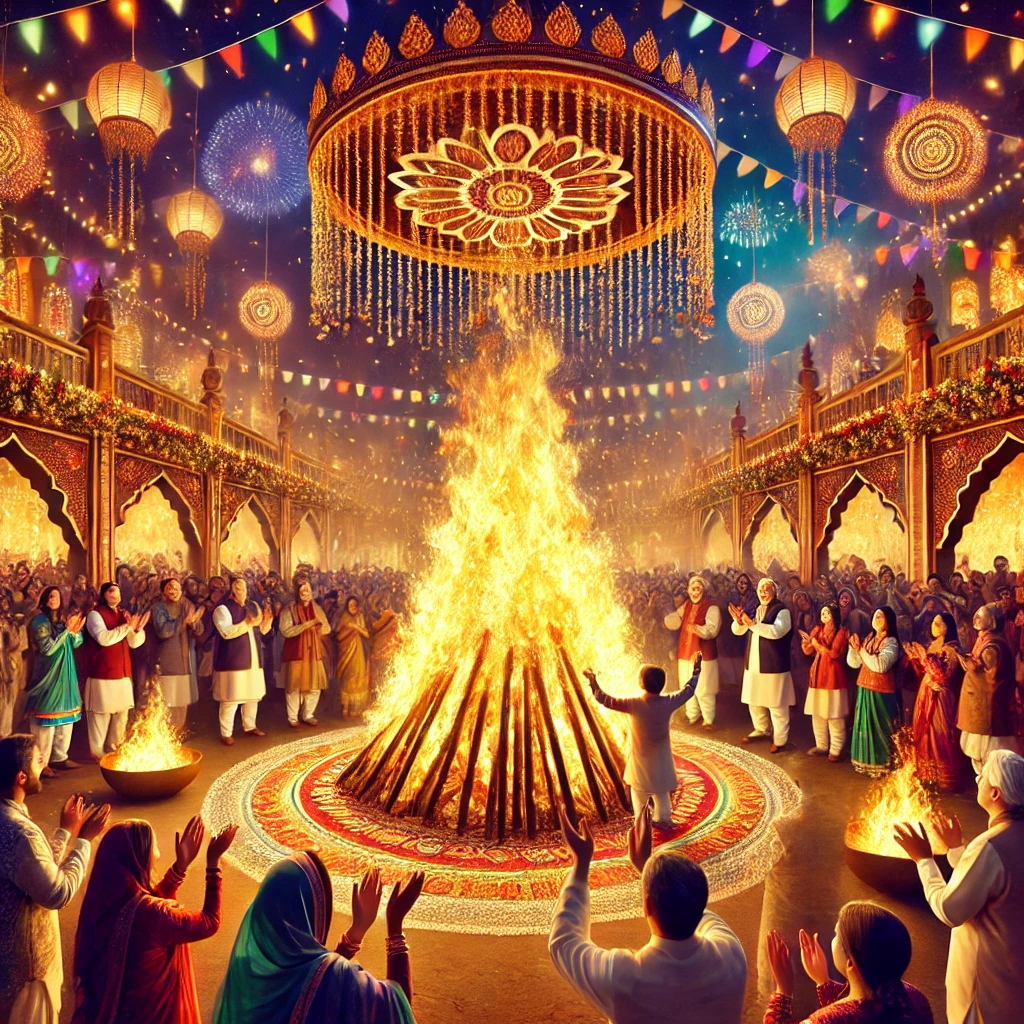
Conclusion: The Eternal Flame of Faith and Renewal
As the bonfires of Holika Dahan illuminate the night across India and around the world this evening, they carry forward a tradition that has endured for centuries. More than just a cultural observation, this festival encapsulates profound philosophical truths about the human condition – our eternal struggle between light and darkness, our capacity for devotion in the face of adversity, and our perennial hope for renewal and transformation14.
The story of Prahlad teaches us about unwavering faith and the protection it brings, while Holika’s fate warns against the misuse of power and privilege. Together, these mythological figures continue to inspire and instruct, their ancient story finding new relevance with each generation412. The bonfire itself becomes a powerful metaphor – consuming the old and negative while illuminating our path forward with warmth and light.
As we participate in or observe Holika Dahan today, we become part of this living tradition. Whether gathering around community bonfires, sharing wishes with loved ones, or simply reflecting on the festival’s meaning, we connect with a collective cultural consciousness that transcends time and space17. In doing so, we honor not just ancient rituals but timeless values – faith, courage, community, and the eternal triumph of good.
May this Holika Dahan bring warmth, renewal, and positive transformation to all who celebrate, and may the spirit of this beautiful tradition continue to illuminate our lives with its wisdom and grace for generations to come



